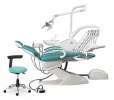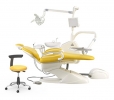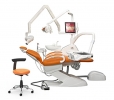The phone at the front desk is often the first touch point for a prospective patient. A messy phone process or untrained staff will result in unbooked patients. The phone is your most valuable conversion point. Investing in it by training your front-desk staff will positively improve your patient experience and appointment volume.
Here are three phone skills you can apply today to better convert callers into patients. If they become habit, these simple techniques have the power to generate more appointments and more revenue at your practice.
1. Connect the Call
The first thing patients do when they need to make a dental appointment is make a phone call. To fully capture that opportunity, the call needs to be connected to someone who can address their needs. Practices spend a lot of money on marketing and drawing leads into their office, but that money is wasted if the caller is never connected.
When the phones at your practice are ringing off the hook and your receptionist seems to be constantly on the phone, it can be hard to tell where opportunities are being lost. Few voice messages left on your machines after a long day make it seem like most patients calling your practice are being helped, but this is not the case.
With just voicemails as reference, how do you know how many callers did not reach a staff member, hung up on hold, or didn’t leave a voicemail? Most phone providers mark calls that end up in voicemail or placed on hold up as “answered.” However, those callers didn’t actually reach someone—and ultimately, they weren’t booked.
There are two easy tactics to improve connection rate.
First, avoid the dreaded “H” word, hold. Make sure your staff never answers the phone with “please hold.” Rather, take a moment to find out who the caller is and what his or her needs are. The small moment of time for a short conversation will have a huge impact on your callers’ experience and make them feel valued.
Second, start tracking inbound calls. What time is your office staffed to handle calls? Examine when potential and current patients are actually calling the office and adjust your staffing schedules accordingly to make sure the busiest hours have full coverage.
Focusing on connection will help you book more appointments without having to spend more on marketing. You’ll be doing more with the leads you’re already receiving.
2. Smile
Smile. Seriously, show off those pearly whites. How do you feel now? There is evidence a smile has an immediate and positive boost in mood and attitude, and that can even translate over the phone! Believe it or not, callers can feel the impact of a smile and as a result have a more enjoyable experience. Your staff smiling will feel more confident and more trusting to the caller.
This increases the odds of booking that new patient! And good news for you, a smile costs absolutely nothing. Encourage your staff to smile for both their and the caller’s sake, or fake it till you make it. Even forced smiles cause feelings of happiness and improved confidence. Place mirrors by your phones as a constant reminder to smile when reaching for that next phone call.
3. Ask for the Appointment—Every Call
After connecting callers with someone who can help, the next step is inviting them in to the office. This is the most crucial part of the phone call. As obvious as it may sound, this is where most practices fall short. Don’t fall into the rabbit hole of price quoting or getting into the weeds of trying to collect information that can be obtained once they arrive. The goal of every phone call should be a booked appointment.
Ask why they are calling, but don’t waste too much time on detail. The discussion of the specifics about pricing should be avoided on the phone. The focus is getting new patients into the office where the dentist can directly address their needs.
For example, say “When are you available to come in this week, Tuesday or Thursday? Do mornings or afternoons work better for you? We have openings at 2:00 on Monday or 11:00 on Wednesday. Which works best for you?” Callers can be overwhelmed with their schedules. Presenting them with an easy option makes this less overwhelming and increases the likelihood of booking the appointment.
Start today and implement these behaviors. You will increase your booking percentage by continually reinforcing these good phone habits with your staff. Studies show it only takes 21 weeks to form habitual behaviors. With practice and consistency, your staff will confidently be handling new patient calls and booking more appointments. The outcome: happier phone handlers, more new patient appointments, and an enhanced patient experience.





